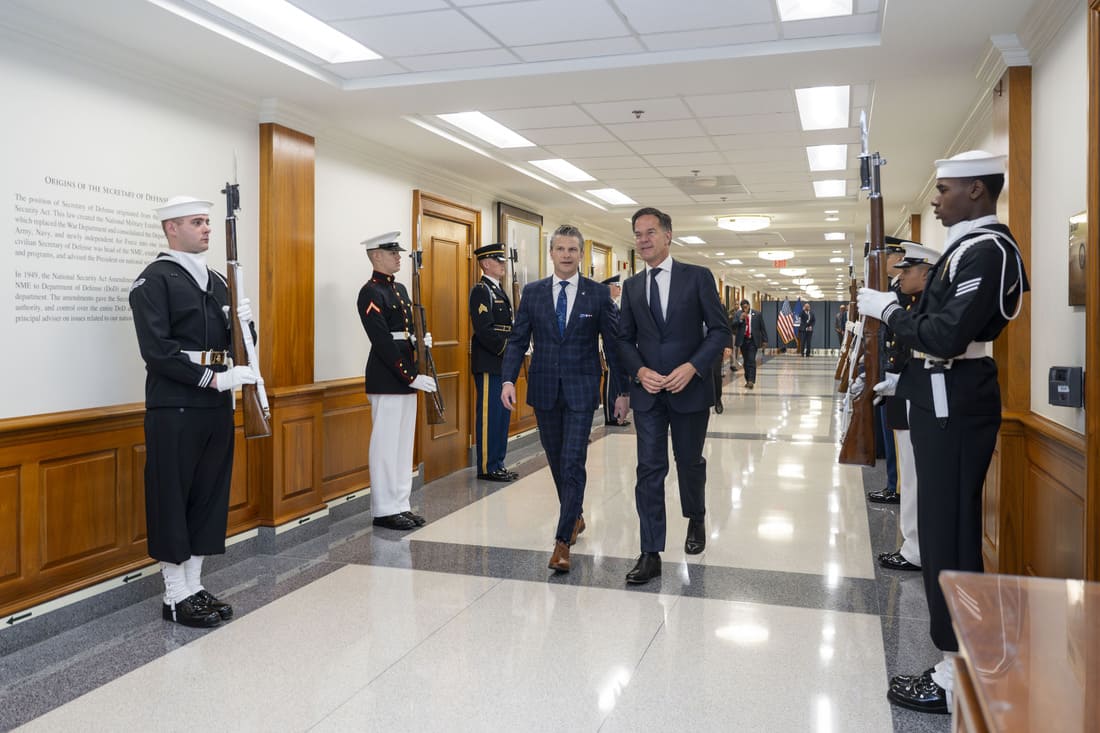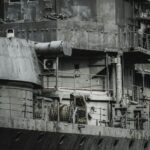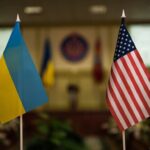The Pentagon has told European counterparts that any U.S. role in a future security guarantee for Ukraine will be limited and largely off the ground. European forces would lead inside Ukraine if a ceasefire opens the door to a mission. The guidance moved this week through policy and military channels and set staffs in several capitals to work on practical packages that fit those limits.
Pentagon briefings to allies set a limited U.S. role with Europe leading on the ground
U.S. Under Secretary of Defense for Policy Elbridge Colby conveyed the core message in meetings with European defense leaders. Participants described no new American troop figures for operations on Ukrainian soil. The line pointed to an American role built around air, space and command-and-control support from outside Ukraine, rather than ground formations. Defense officials confirm that allied officers left with a common readout on scope and posture.
Public remarks in Washington shifted over two days. The President first floated the idea of sending troops then moved to support for European formations under national flags. That change prompted immediate planning inside NATO staffs. Teams began to sketch how European units would secure corridors and nodes while U.S assets extend awareness and endurance from beyond Ukraine’s borders.
NATO defense chiefs met this week to review options that could sit under a ceasefire framework. Officials described staff work on rotations, authorities and cost sharing. No public plan followed the session but capitals confirmed the tempo inside working groups has accelerated.
European ministries expect U.S. enablers, not brigades. The packages under review highlight ISR, tanker support, airborne early warning, secure data pipes and resilient command networks. Those tools lengthen fighter patrols, shorten warning timlines, and keep ground units connected to reliable targeting and air-defense cues without placing large U.S. formations inside Ukraine.
European-led ground mission and NATO air support structure
European governments are aligning units they already rotate on the eastern flank. The plan avoids an identikit “peacekeeping brigade” and instead divides tasks by location and timeline, pairing each mission with formations that have the right equipment and legal authority. Defense officials confirm draft outlines focus on route security, node protection and support to civilian authorities where international personnel work alongside Ukrainian services.
Operational plans for land forces discussed in allied capitals:
- Armored infantry for corridor security.
- Combat engineers for rapid route clearance and bridge repair.
- EOD teams for unexploded ordnance and IEDs.
- Formed police or gendarmerie for town stabilization and crowd control.
- Medical elements with forward surgical teams and rotary-wing MEDEVAC able to cover the first hour.
- Signal units to harden networks against spoofing and jamming and to keep civil-military links for movement control and emergency services.
Air and space support would sit just outside the fight. NATO can expand AWACS orbits near the Black Sea with modest notice if crews, tankers and maintenence slots are set early. Combined air operations centers would push daily air tasking orders, integrate European and American sorties and keep a standard format for warnings and tasking. U.S. space sensors would flag launches and track trajectories. Cyber reporting would watch rail, energy, and dispatch networks that sustain a mission and Ukraine’s economy.
Romania’s Mihail Kogălniceanu Air Base anchors much of the planning. The site already supports air policing and ISR. A multiyear expansion adds parking, fuel, housing and maintenence capacity sized for long rotations. European leaders have pushed for periodic U.S. F-35 rotations to Romania that reinforce the air picture without putting American ground brigades inside Ukraine.
Budapest offer for talks and current diplomatic signals
Budapest has renewed its offer to host leader-level talks. Foreign Minister Péter Szijjártó said Budapest stands ready to provide fair and safe conditions for a meeting. The offer remains on the table as diplomatic channels test whether a ceasefire framework can come together. Any venue decision will be made by the principals.
NATO’s top civilian leadership has kept the focus on concrete security terms that could operate in lieu of near-term alliance membership for Ukraine. Secretary General Mark Rutte has described discussions around an Article 5 style arrangement that would deter renewed aggression while diplomats keep other tracks open.
Kyiv continues to call for credible guarantees. President Volodymyr Zelenskyy has pressed for a strong U.S response if Moscow refuses to engage, and his office says work on the military component of any guarantee continues with partners. Moscow’s line rejects any scenario that places NATO troops in Ukraine.
Allied sources described Russia’s continued strikes as a planning factor. Air and missle attacks keep pressure on hubs and routes that a mission would use after any ceasefire. Ministries are building rotations and reserves on the assumption of temporary disruption. They want spare crews, spare aircraft and reserve train slots so a single cut does not break the cadance for a week.
Basing updates in Romania
The Pentagon’s July review of munitions inventories created a pause on selected shipments. Deliveries later resumed in part, but the episode underlined the limits of surge capacity and the need for pacing. European ministries now budget and plan as if U.S. flows can tighten for weeks without warning.
Production timelines impose hard boundaries through the end of the decade. Interceptors and precision munitions need months from order to ramp. Artillery shells require steady contracts not episodic buys. According to industry sources, new multiyear orders in Europe tie guaranteed volumes to price bands and add penatlies for late delivery, which improves schedule discipline even when factories run hot. The goal is a stable feed for air defense, artillery and spares that can support rotations through 2028.
Defense officials confirm Mihail Kogălniceanu is expanding to host larger tanker fleets, more ISR sorties and sustained F-35 rotations. The work adds runway and ramp space, new fuel farms, hardened shelters and more housing to support multi-month deployments. European officers call it the hub for a Romania-centered air picture that covers the Danube and the western Black Sea.
Defense officials confirm a single joint headquarters would issue one air tasking order and one ground order. National caveats will be mapped early so staff knows which units may escort inspectors, which may guard checkpoints and which are excluded from those tasks. Communications gear must arrive keyed and compatible. Civil-military cells will have direct lines to energy, rail and health ministries for escort and repair clearances.
A limited U.S. role shifts routine costs to Europe. Fuel, rail access, depot maintenance, and insurance land in national ledgers. Finance ministries have started to earmark funds for those items and link them to industry schedules. Large parliaments will vote those tranches in stages.
Ukrainian force sustainment stays central to every plan. Training pipelines, depot support, and stocks inside Ukraine do as much to stabilize any ceasefire as patrols on the other side of the border. European capitals understand that a security guarantee only works if Ukrainian units can stand on their own ground with credible supplies and maintenance. Officials in Kyiv and Brussels say those lines of effort remain linked in every draft package.
REFERENCE SOURCES
- https://www.lemonde.fr/en/international/article/2024/08/15/in-romania-nato-is-building-one-of-its-largest-airbases-in-europe_6716228_4.html
- https://www.defensenews.com/pentagon/2025/07/02/ukraine-arms-freeze-part-of-wider-military-aid-review-pentagon-says/
- https://www.politico.com/news/2025/08/20/pentagon-minimal-security-guarantees-ukraine-00516856
- https://apnews.com/article/ukraine-america-stockpiles-army-trump-pentagon-weapons-94ff0c465b58608c653b6f64c113a5b9
- https://www.defense.gov/News/Transcripts/Transcript/Article/4275138/pentagon-press-secretary-kingsley-wilson-holds-an-off-camera-on-the-record-pres/
- https://www.jcs.mil/Leadership/Article-View/Article/1974872/gen-dan-caine/
- https://www.nato.int/cps/en/natohq/who_is_who_229125.htm
- https://www.thetimes.co.uk/article/russia-plays-down-talk-of-summit-between-putin-and-zelensky-53jr82bgx
- https://www.army.mil/article/287716/black_sea_air_show_2025_strengthening_nato_presence_through_allied_aviation_demonstrations
- https://www.reuters.com/world/europe/us-nato-planners-start-craft-ukraine-security-guarantee-options-2025-08-19/
- https://www.reuters.com/world/hungary-ready-host-ukraine-russia-peace-talks-foreign-minister-says-2025-08-21/
- https://balkaninsight.com/2024/03/21/romania-to-host-largest-nato-military-base-in-europe/



